

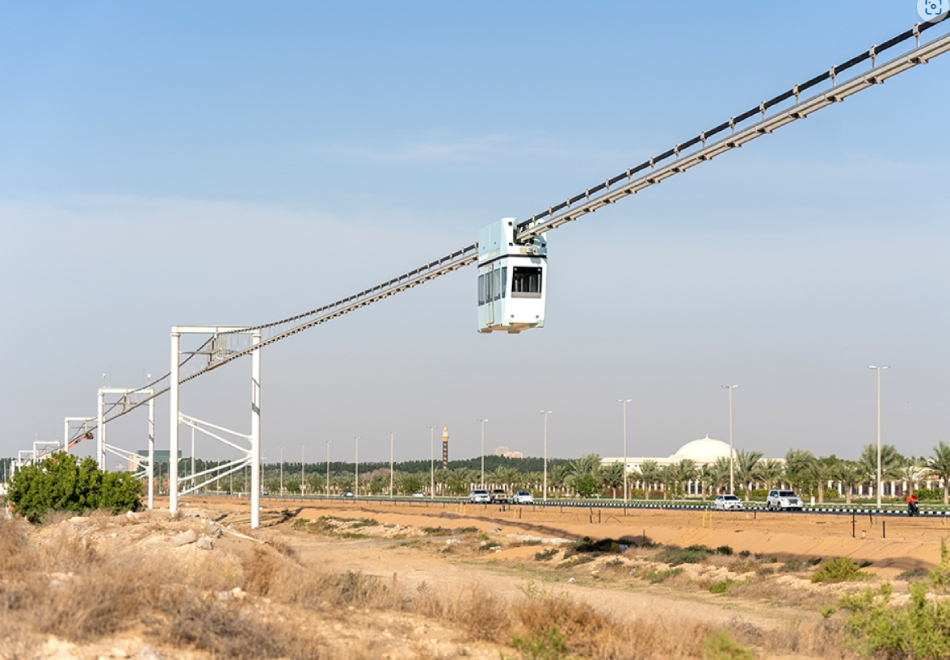
uBus Karat on the track structure in Sharjah
Magnetic levitation trains, which were launched at different times in China, South Korea, Japan and other countries, are still not widely used. What prevented the once cutting-edge solution from becoming the primary choice to replace ground rail transport, and what sets it apart from uST? Let’s explore the applicability of these transportation modes to figure it out.
It is costly to construct an overpass for maglev traffic. In Shanghai, a line for a maglev train with two stations had been building in 2001–2003. It connected Pudong International Airport with a metro station. The length of the line was 30.5 kilometers and its erection costed about $1.3 billion, that is, about $43 million per kilometer (now this amount would be even more). The high costs were explained by the fact that a significant part of the overpass was laid over a marshy area and for the supports it was necessary to create concrete pads resting on a rocky base up to 85 meters thick. Obviously, not all states are prepared to bear such costs.
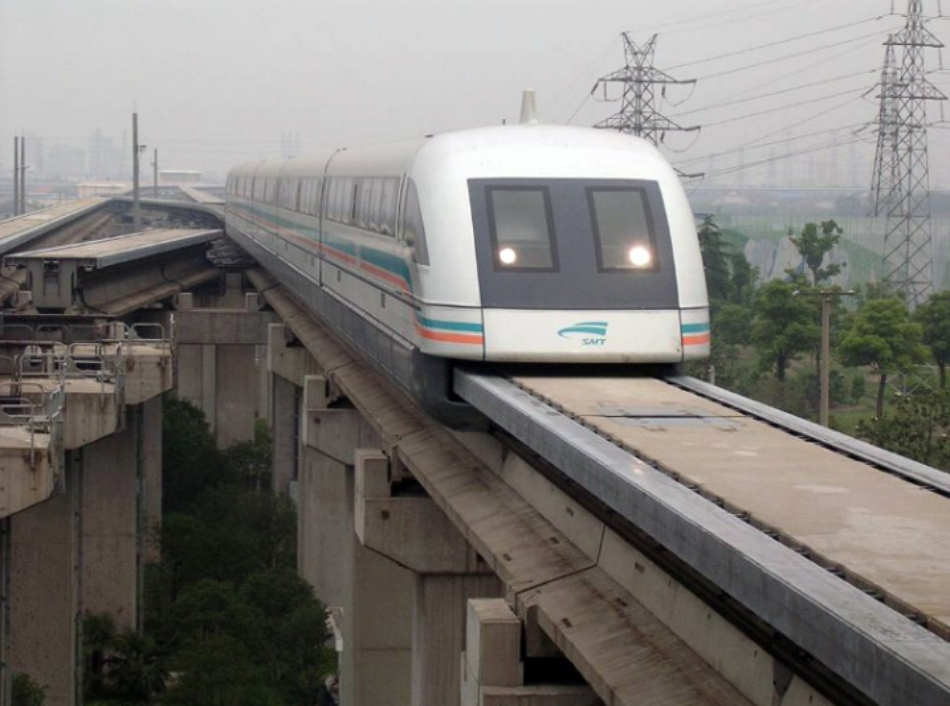
Maglev in Shanghai. Photo: wikipedia.org
Laying the line of uST transport and infrastructure complex of the same length would be much cheaper due to the absence of massive material-intensive constructions. The price of the uST complex depends on several factors. But we can confidently say that all other natural, climatic and infrastructural conditions being equal, the construction cost for 1 km of the uST transport overpass is 4% of the construction cost for 1 km of the metro.
A string rail overpass is capable of passing over difficult terrain and various obstacles: rivers, swamps, lakes, industrial facilities and residential areas. At the same time, the pitch of anchoring structures and supporting towers is up to 10 km and 2000 m respectively. This is an economical solution that does not interfere with the environment or the established infrastructure of the city.
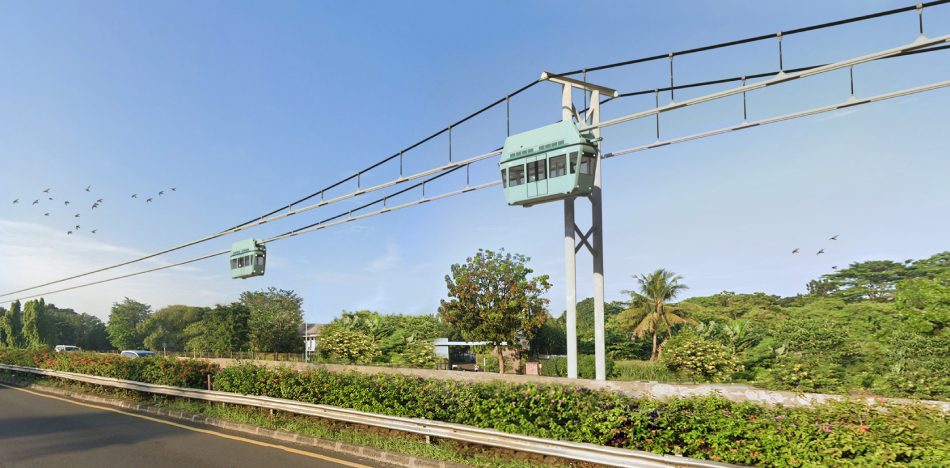
Passenger uPods on the track structure (visualization)
When using a transport system, the issue of its payback is vital. Despite its relevance among the population, the already mentioned Shanghai maglev has recently brought annual losses of $93 million.
A high-speed train may be in demand when transporting large numbers of people over long distances, for example on the Beijing – Shanghai route. What if the region is sparsely populated or passenger traffic is high only during rush hour, when people from the suburbs or residential areas go to work in the city center in the morning and return in the evening? During the daytime, you will have to launch a long train, which will remain half empty. This is unlikely to generate much revenue. Moreover, on a short segment of the journey, the maglev will not be able to demonstrate high speed as one of its main advantages.
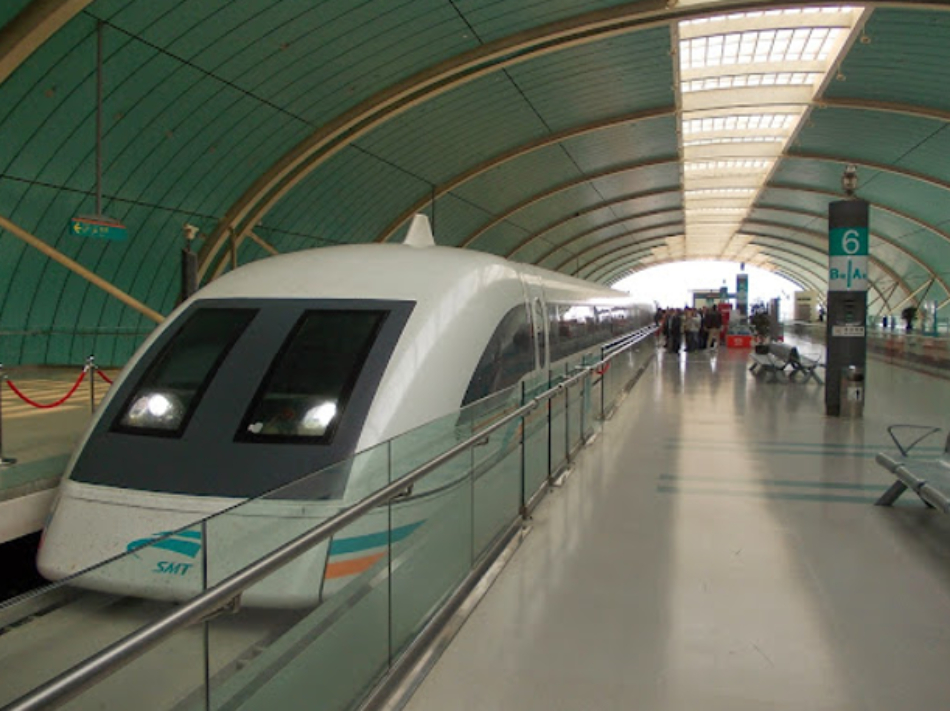
Maglev at the station. Photo: tripadvisor.ru
Another aspect is freight transportation. For cargo maglev it is necessary to build a separate track. The question arises again: will it be profitable?
The uST transport and infrastructure complex will pay off in the coming years after construction. Unmanned electric vehicles on steel wheels (uPods), including those assembled into trains, can accommodate from 2 to 250 people. The number of uPods on the line and the intervals are adjusted depending on passenger traffic. Low-capacity transport is used to reach sparsely populated and remote areas, which is advantageous given the high energy efficiency of uPods and the low cost of track construction. As for speed, lightweight and mobile rail electric vehicles are capable of accelerating up to 150 km/h over shorter distances.
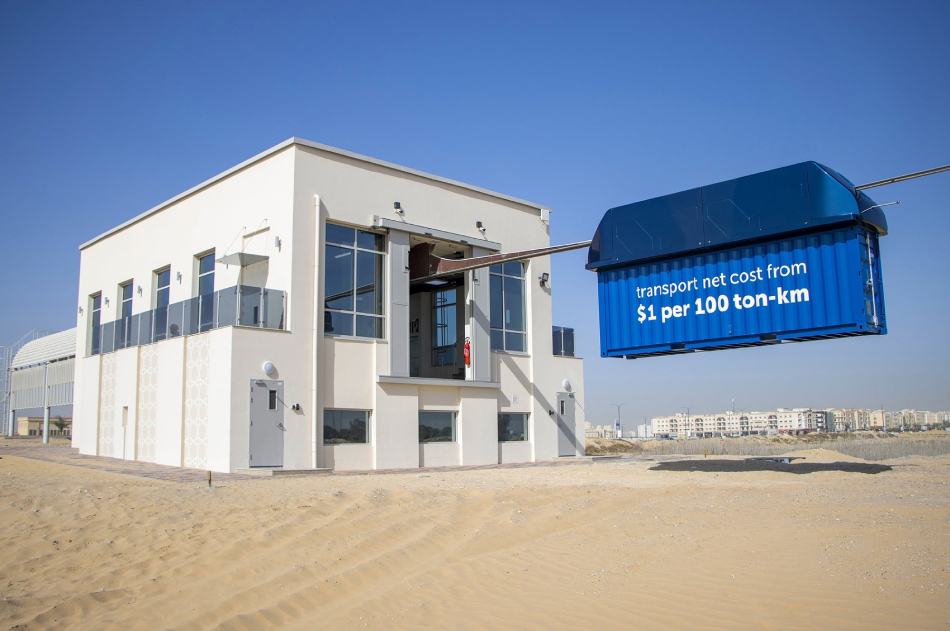
uPod for transporting goods
Both mounted and suspended uPods can simultaneously move along the uST string rail overpass, and both passengers and cargo can be transported. So, there is no need to build several types of tracks, and the existing complex will pay for itself in a short time.
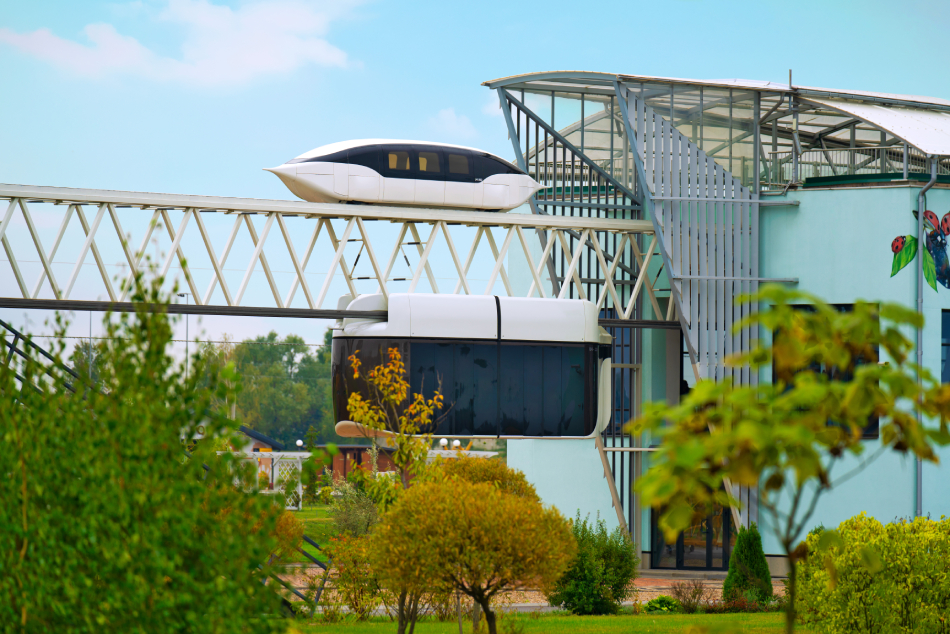
Mounted and suspended uPods on the track structure
Maglev cannot use the city’s existing transport infrastructure, nor can it use the railway tracks. In order to run a maglev train, it is necessary to build large stations, a special double-sided track on massive, closely spaced supports for track structure with huge magnets. It is not easy to integrate such structures into dense urban areas: they would occupy a large space and could disrupt the ground tracks, which are already in use.
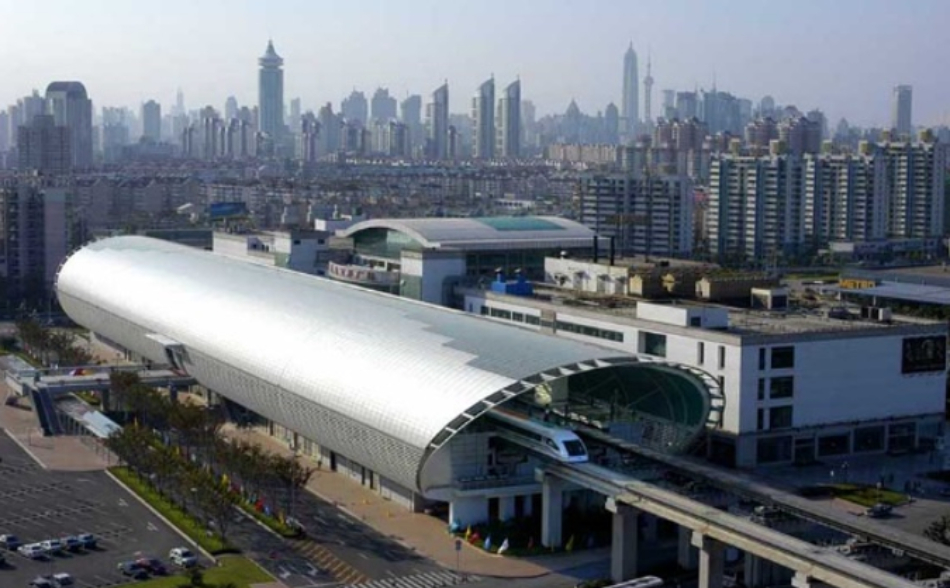
Maglev leaves the station. Photo: vagon-vokzal.ru
The construction of uST transport infrastructure complexes requires minimal land acquisition. The anchoring structures can be combined with buildings for various purposes, including passenger stations and cargo terminals. The light and openwork string rail track will harmoniously fit into the architecture of any settlement, including cities with historical buildings, and will not disturb the existing landscape and land routes. A special advantage of uST is that the track can be built right over available roads without blocking them. This is exactly how the string rail overpass was built in uSky center.
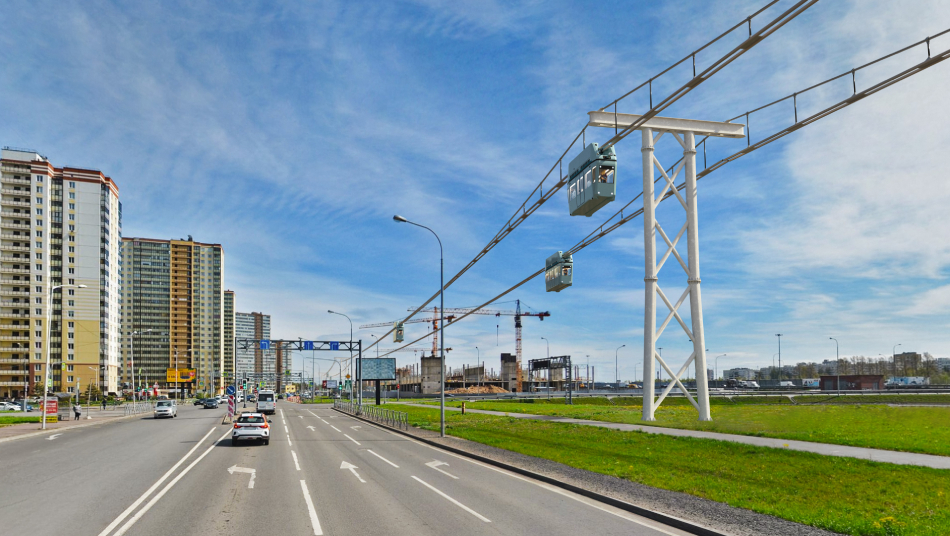
uST solution for urban transportation (visualization)
The main problems in introducing maglev are the high cost, long payback period and complicated integration into urban infrastructure. A magnetic levitation train is ineffective for short distances and low passenger volumes.
uST is easy to implement in dense urban areas and is beneficial for moving large quantities of cargo and passengers over any distance. Solution from UST Inc. requires lower costs than everywhere spread transport: metro, LRT, cable cars. uPods that are part of uST transport and infrastructure complexes are fast, environmentally friendly, reliable and safe in various climatic conditions.
This form asks for your consent to allow us to use your personal data for the reasons stated below. You should only sign it if you want to give us your consent.
Who are we?
The name of the organisation asking you for consent to use your information is:
Global Transport Investments
Trident Chambers, P.O. Box 146, Road Town
Tortola
British Virgin Islands
We would like to use the following information about you:
Why would we like to use your information?
Global Transport Investments would like to send this information to company registry, inform you about its news, for refund purposes.
What will we do with your information?
We store your name, address, ID Data, date of birth into company registry. We will share your e-mail & phone number with IT Service (https://digitalcontact.com/), SMS Center (http://smsc.ru). They will add your details to their mailing list and, when it is news update, they will send you an email or sms with details. We store your credit card number for possible refunds.
How to withdraw your consent
You can withdraw the consent you are giving on this form at any time. You can do this by writing to us at the above address, emailing us at the address: [email protected] or by clicking on the unsubscribe link at the bottom of emails you receive.
This privacy notice tells you about the information we collect from you when you sign up to receive our regular newsletter via our website. In collecting this information, we are acting as a data controller and, by law, we are required to provide you with information about us, about why and how we use your data, and about the rights you have over your data.
Who are we?
We are Global Transport Investments. Our address is Trident Chambers, P.O. Box 146, Road Town, Tortola, British Virgin Islands. You can contact us by post at the above address, by email at [email protected].
We are not required to have a data protection officer, so any enquiries about our use of your personal data should be addressed to the contact details above.
What personal data do we collect?
When you subscribe to our newsletter, we ask you for your name and your email address.
Why do we collect this information?
We will use your information to send you our newsletter, which contains information about our products.
We ask for your consent to do this, and we will only send you our newsletter for as long as you continue to consent.
What will we do with your information?
Your information is stored in our database and is shared with with IT Service (https://digitalcontact.com/), SMS Center (http://smsc.ru). It is not sent outside of the Euro. We will not use the information to make any automated decisions that might affect you.
How long do we keep your information for?
Your information is kept for as long as you continue to consent to receive our newsletter.
Your rights over your information
By law, you can ask us what information we hold about you, and you can ask us to correct it if it is inaccurate.
You can also ask for it to be erased and you can ask for us to give you a copy of the information.
You can also ask us to stop using your information – the simplest way to do this is to withdraw your consent, which you can do at any time, either by clicking the unsubscribe link at the end of any newsletter, or by emailing, writing us using the contact details above.
Your right to complain
If you have a complaint about our use of your information, you can contact the Information Commissioner’s Office.
Rate and Comment
You can assess the importance of a particular publication and the level of its preparation. Share your opinion in the comments!